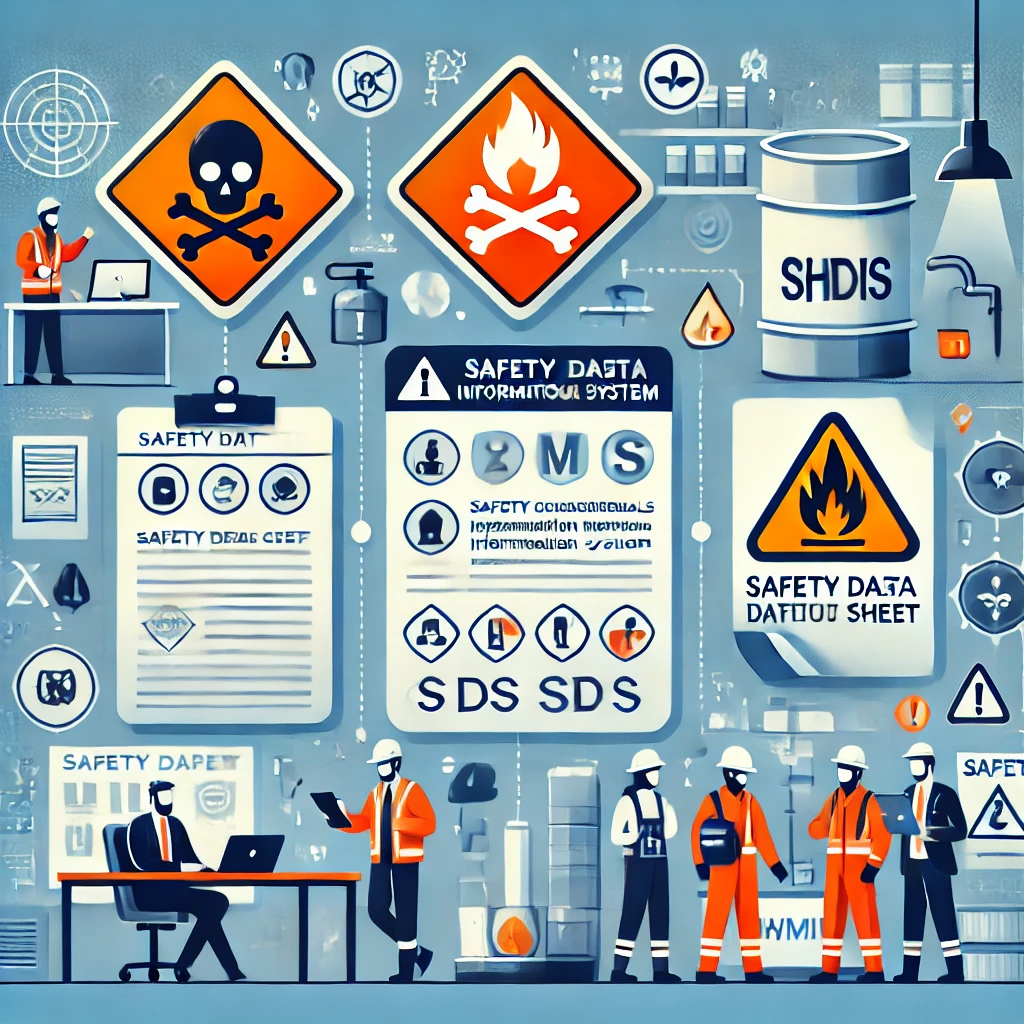What is WHMIS? A Comprehensive Guide
The Workplace Hazardous Materials Information System (WHMIS) is a national information system in Canada designed to protect workers by ensuring they have the knowledge and tools necessary to safely handle hazardous materials. Implemented in 1988, WHMIS sets standards for the classification, labeling, and dissemination of information about hazardous substances in the workplace. The system aims to reduce the risks of workplace injuries and illnesses by providing clear, standardized guidelines for the handling of hazardous products.
In 2015, WHMIS was updated to align with the Globally Harmonized System of Classification and Labelling of Chemicals (GHS), an international standard. This update is referred to as WHMIS 2015, replacing the previous version (WHMIS 1988) and introducing new classification criteria, labels, and safety data sheets (SDS).
In this blog, we’ll dive deeper into what WHMIS is, how it works, and why it’s so important for Canadian workplaces.
1. The Purpose of WHMIS
WHMIS was created to address the dangers associated with hazardous materials in the workplace. These materials could be chemical, biological, or physical hazards that could potentially cause harm to workers if not properly managed.
The goals of WHMIS are to:
- Protect workers by ensuring they have access to information about the hazardous materials they may encounter.
- Reduce workplace injuries and illnesses by promoting the safe use, storage, and disposal of hazardous materials.
- Provide standardized information across industries to create consistency in how hazardous materials are handled and labeled.
2. Key Components of WHMIS
WHMIS consists of several key elements that work together to ensure that workers are informed and protected:
a. Classification of Hazardous Materials
WHMIS requires that all hazardous products be classified based on their specific hazards. Products are grouped into hazard classes, such as:
- Physical hazards: Includes materials that are flammable, explosive, or reactive.
- Health hazards: Includes materials that are toxic, corrosive, carcinogenic, or cause respiratory issues.
The classification is done using specific criteria set out by the GHS, ensuring a consistent approach to identifying hazardous materials.
b. WHMIS Labels
Every hazardous product must have a WHMIS label. These labels provide critical information at a glance, so workers can quickly identify the risks associated with the material. The label typically includes:
- Product identifier: The name of the hazardous material.
- Pictograms: Visual symbols indicating the type of hazard (e.g., a flame for flammable materials or a skull for toxicity).
- Signal words: Words like “Danger” or “Warning” to indicate the severity of the hazard.
- Hazard statements: Descriptions of the risks, such as “Causes skin irritation” or “May cause cancer.”
- Precautionary statements: Instructions on how to handle the material safely.
These labels must appear on the product container and be clearly visible and legible.
c. Safety Data Sheets (SDS)
A Safety Data Sheet (SDS) provides more detailed information than a WHMIS label. It includes comprehensive details about the hazardous product, including:
- Composition and ingredients
- First aid measures
- Firefighting measures
- Accidental release procedures
- Safe handling and storage instructions
- Toxicological information
SDS must be readily available to workers, and they are essential for training employees on the proper handling of hazardous materials.
d. Worker Education and Training
One of the most important components of WHMIS is worker education and training. Employers are required to provide training to ensure that workers understand:
- The risks associated with the hazardous materials they may encounter.
- How to read and understand WHMIS labels and SDS.
- The proper procedures for handling, storing, and disposing of hazardous materials.
- What to do in case of an emergency, such as a spill or exposure to a hazardous substance.
Training must be provided regularly and whenever new hazardous materials are introduced into the workplace.
3. WHMIS Pictograms
WHMIS 2015 introduced new pictograms that are aligned with GHS. These symbols appear on labels to quickly inform workers about the type of hazard they are dealing with. Common WHMIS pictograms include:
- Flame: Indicates that the material is flammable or combustible.
- Exclamation mark: Used for materials that cause irritation, skin sensitization, or specific health effects like dizziness.
- Health hazard: Denotes materials that may cause serious health effects, such as cancer or respiratory issues.
- Skull and crossbones: Indicates acute toxicity, meaning the material can cause serious harm or death if ingested, inhaled, or absorbed.
- Corrosion: Warns of materials that can cause skin corrosion or damage metals.
These symbols provide a visual shorthand for the risks associated with a material, allowing workers to make informed decisions quickly.
4. The Importance of WHMIS for Workers
For workers, WHMIS is essential because it provides them with the knowledge they need to stay safe while performing their duties. Understanding how to interpret labels, SDS, and pictograms allows workers to make better decisions about handling hazardous materials and reacting to emergencies.
WHMIS also empowers workers to take responsibility for their own safety by ensuring they have access to the information they need to protect themselves and their colleagues.
5. The Role of Employers in WHMIS Compliance
Employers play a crucial role in ensuring WHMIS compliance. Under Canadian law, employers are responsible for:
- Providing access to SDS: Employers must ensure that workers have easy access to up-to-date SDS for every hazardous product in the workplace.
- Properly labeling products: All hazardous products must be labeled according to WHMIS standards. Employers are responsible for ensuring that labels are not damaged or removed and that they remain readable.
- Delivering training: Employers must provide training for workers on how to safely handle hazardous materials. This training should be refreshed regularly to ensure that workers stay informed of any changes in products or regulations.
Failing to comply with WHMIS can result in serious consequences, including fines and legal liability in the event of a workplace accident.
6. WHMIS 2015 vs. WHMIS 1988
WHMIS 2015 represents a significant update to the original WHMIS system introduced in 1988. Some of the major changes include:
- Alignment with GHS: The new system aligns with global standards, making it easier for companies that operate internationally to comply with hazardous materials regulations.
- New pictograms: WHMIS 2015 introduced new pictograms that are consistent with those used internationally under GHS.
- SDS format: WHMIS 2015 replaced Material Safety Data Sheets (MSDS) with SDS, and the format for these documents was standardized to include 16 sections, ensuring more uniform and accessible information.
7. Conclusion
WHMIS is a critical system that promotes safety in Canadian workplaces by providing essential information about hazardous materials. By ensuring proper labeling, easy access to safety data sheets, and effective worker training, WHMIS reduces the risks associated with dangerous substances.
Whether you’re an employer or an employee, understanding WHMIS and staying compliant with its regulations is vital for maintaining a safe and healthy work environment. Regular updates to training and procedures ensure that all workers have the knowledge they need to prevent accidents and protect themselves and their coworkers.
For more information on WHMIS or to access resources on compliance, visit the Government of Canada’s WHMIS page or consult a Licensed Health and Safety Consultant.






